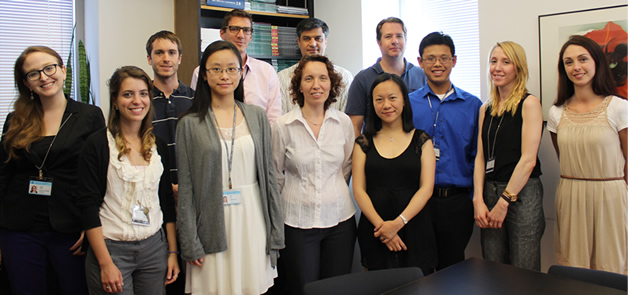Columbia University
Irving Medical Center
Neurological Institute
710 West 168th Street, 3rd floor
(212) 305-1818
Featured Research
COGNITIVE NEUROSCIENCE OF AGING LABORATORY

Yaakov Stern, PhD
The Cognitive Neuroscience of Aging Laboratory, led by Dr. Yaakov Stern, explores cognitive changes throughout aging and their neural basis, with a strong focus on state-of-the-art cognitive approaches and multi-modal imaging. As explained by Dr. Stern below, the lab deals with two main themes, which underlie two related, large-scale projects.
Reference Ability Neural Network Study
The first theme is an attempt to understand cognitive aging. Which features of cognition change with aging (in the absence of Alzheimer's disease) and which do not? Can we identify changes in the brain that are associated with these cognitive changes? Can we understand and differentiate between brain changes associated with age-related effects on different aspects of cognition? Four latent variables, or reference abilities, capture the majority of the variance in age-related cognitive change: episodic memory, fluid reasoning ability, perceptual speed, and vocabulary. Performance on the first three declines with aging beginning at age 20, while vocabulary remains stable throughout the lifespan. We are in the process of imaging a large number of healthy adults (ages 20 to 80) while performing a set of 12 cognitive tasks which reliably represent the four reference abilities (3 per ability).

Schematic sketch of brain-behavioral framework for RANN study Quantities given in rectangular or trapezoidal shapes are recorded in the study, while round shapes indicate both reference abilities and reference-ability neural networks. The figure illustrates that not only are meaningful latent constructs expected on the basis of common patterns of fMRI activation across tasks representing the cognitive ability, but that those constructs are hypothesized to be related to the corresponding constructs defined on the basis of the correlations among behavioral performance in those same tasks. The upper boxes indicate that we expect that the effect of age on cognitive performance might be mediated by specific measures of brain aging. Further, brain changes may influence expression of the reference ability neural networks, yielding observed age-related cognitive changes.
Christian Habeck has been analyzing the fMRI data and has determined that there is a unique network for each reference ability. In fact, we can detect the nature of the task someone is doing based on their fMRI data. As people age, these brain networks remain intact, but they work harder for all abilities except for vocabulary.
Cognitive Reserve Study The second theme is an attempt to understand individual differences in susceptibility to aging and Alzheimer's disease. Why do some people age more successfully than others? Why can some people sustain more age-related brain changes than others and still remain more cognitively intact? This study includes two groups of healthy adults (ages 20-30 and 60-70). We image them with tasks designed to understand how brain networks respond to challenge. We also image as many age-related changes as possible, including brain volume, white matter hyperintensity burden, white matter tract integrity, resting blood flow, default network integrity, and amyloid burden. The goal is to understand how some people can function better than others given a comparable amount of brain changes.
Jason Steffener has used the fMRI data to demonstrate that higher cognitive reserve is associated with 1) the ability to better maintain brain network integrity in the face of age-related brain changes, and 2) the ability to enlist compensatory networks, if needed.
 Members of the Cognitive Neuroscience of Aging Laboratory include, top row from left: David Parker, Jason Steffener, Ray Razlighi, Christian Habeck, and Philip Yeung. Front row from left: Brittany DeFeis, Martina Azar, Dan Liu, Oksana Tatarina-Nutman, Yunglin Gazes, Erica Hahn, and Deirdre O'Shea. Not pictured: Daniel Barulli, Jhedy Dorrejo, and Brianna Hill. |
Using analytic approaches developed by Christian Habeck, Yunglin (Elaine) Gazes, identified a brain network that is utilized during set-switching, which is an important cognitive function affected by aging. Expression of this network was predictive of actual task performance, and this finding was replicated in a second set of data.
Qolamreza Razlighi is investigating the role of changes in network efficiency and capacity, accounting for age-related cognitive decline and how this interacts with cognitive reserve (CR). Daniel Barulli is using cognitive experimental approaches to understand CR. He has shown that proxies of CR are associated with greater flexibility in the selection of solution strategies in a calculation task.
We are also conducting other studies, including cognitive intervention trials in healthy elders that focus on both exercise and cognitive stimulation, and a study of the natural history of Alzheimer's disease. All studies are coordinated and assisted by an intrepid research staff including Martina Azar, Brittany DeFeis, Jhedy Dorrejo, Erica Hahn, Brianna Hill, Deirdre O'Shea, Oksana Tatarina-Nutman, and Philip Yeung.

